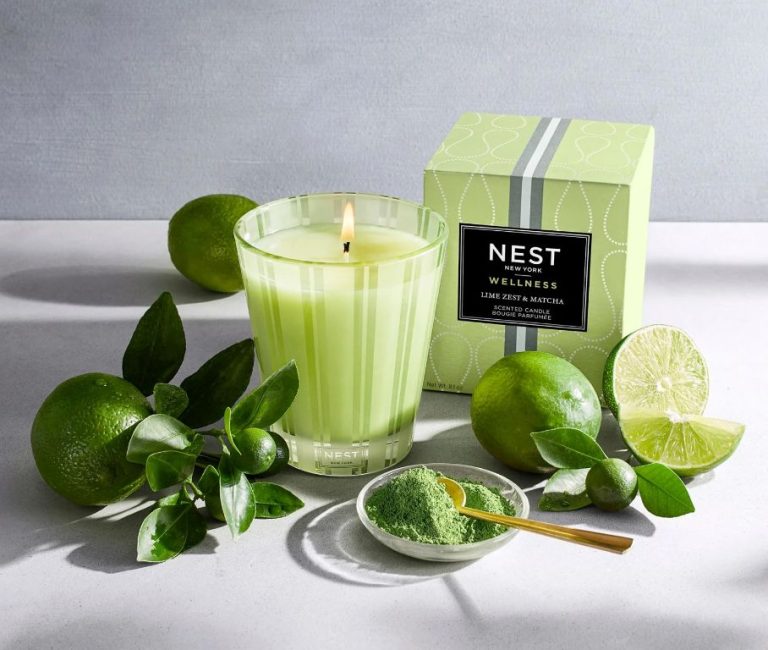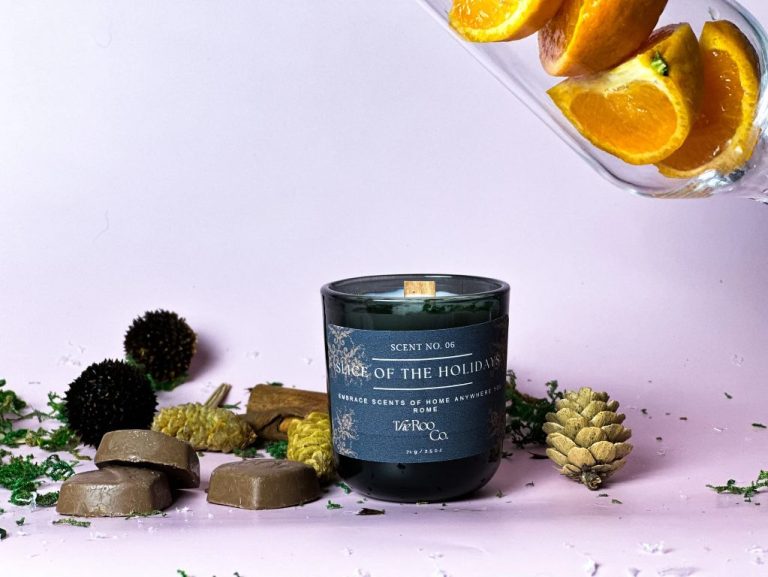What Smells Like Blackcurrant?
Introducing the Blackcurrant
The blackcurrant (Ribes nigrum) is a deciduous shrub in the family Grossulariaceae grown for its edible berries (source: https://en.wikipedia.org/wiki/Blackcurrant). It is native to parts of central and northern Europe and Asia. The bush grows to about 1.5-2 meters tall and has woody stems with lobed leaves and small greenish flowers. The blackcurrant fruit is a small, round berry around 0.5 cm in diameter that grows in bunches somewhat like grapes. When ripe, the berries are dark purple and glossy with a tart, bittersweet flavor often described as musky or earthy. They have a high natural pectin content which gives them a jelly-like texture. Blackcurrants grow well in cool climates with adequate moisture and partial sun exposure. They are hardy, pest-resistant, and high yielding, making them a popular backyard crop in places like the UK where they are commonly used in jams, juices, syrups, baked goods, and other foods.
The Distinct Aroma
Blackcurrant has a very potent, musky aroma that is quite distinctive. Though fruity in nature, it also has an earthy, almost animalic quality to it. The smell is often described as a mixture of sweet yet tart berries with a hint of green, leafy freshness. However, there are also deeper, richer notes that give blackcurrant its unique smell profile.
The berries themselves exude flavors of plum, prune and black cherry with a slight pippy bitterness. However when used in fragrances or flavors, blackcurrant takes on a more complex aroma. There are muted facets of cat urine, sweat and body odors which give it an unexpected funkiness. This sets it apart from other berry-based scents and gives blackcurrant a depth and mystique.
The tart, tangy qualities of blackcurrant are noticeable but tempered by its smooth, mellow dimensions. It occupies a curious space between zesty citrus, herbaceous green notes and heady, sensual base notes. This makes blackcurrant a versatile ingredient but also a polarizing one. Its potent muskiness may be off-putting to some while utterly addictive to others.
The Source of the Smell
The characteristic blackcurrant aroma comes from a complex mix of volatile compounds like pyrazines, terpenes, and esters that are present in the berries. Specifically, studies have identified pyrazines such as 3-isopropyl-2-methoxypyrazine, 3-sec-butyl-2-methoxypyrazine, and 3-isobutyl-2-methoxypyrazine as key contributors to the blackcurrant smell (https://pubs.acs.org/doi/10.1021/acs.jafc.8b02070). The pyrazines impart earthy, musty, and bell pepper-like notes. Monoterpenes like β-myrcene, limonene, and γ-terpinene give fruity, citrusy aromas. Esters like ethyl hexanoate and ethyl butanoate lend a sweet, berry-like quality.
In addition, the distribution and concentrations of these aroma compounds can vary depending on blackcurrant cultivar, growing region, weather conditions, and ripeness, leading to differences in the exact smell profile (https://www.sciencedirect.com/science/article/pii/S0023643821015784). But the complex mix consistently produces the characteristic blackcurrant aroma in the berries.
Blackcurrant Aroma in Foods
Blackcurrant flavor is commonly used in many different types of foods and beverages. Blackcurrants have a unique tart yet sweet flavor that makes them versatile to use in both savory and sweet dishes.
One of the most popular ways blackcurrants are used is in jams and jellies. The high natural pectin content in blackcurrants makes them excellent for creating spreads. Blackcurrant jam has a bright purple color and rich, tangy flavor that pairs well with scones, toast, peanut butter sandwiches, and more. According to BBC Good Food, blackcurrant jam is a favorite topping for cheesecakes and ice cream sundaes.
Juices and syrups are another way to enjoy the taste of blackcurrants. Blackcurrant juice provides a healthy dose of vitamin C and antioxidants. The juice can be enjoyed on its own, used as a mixer for cocktails, or reduced into a concentrated syrup. The syrup is useful for drizzling over desserts, adding to vinaigrettes, or sweetening beverages.
Blackcurrants are also used to flavor an array of baked goods. Tin and Thyme recommends adding fresh or frozen blackcurrants to scones, muffins, cakes, and pastries. The berries add moisture, texture, and a burst of tart flavor. Dried blackcurrants can also be used in cookie and granola recipes.
Overall, blackcurrant’s versatility makes it a popular ingredient in sweet and savory recipes. The aroma brings a unique taste that enhances the flavors of many foods and beverages.
Blackcurrant Aroma in Fragrances
Blackcurrant is a popular fragrance note used in many perfumes, candles, and bath products. The smell of blackcurrant is very distinctive, often described as sweet yet tart and fruity with aspects of berries, citrus, and green leaves.
In perfumery, blackcurrant notes add a rich complexity and natural fruitiness to fragrances. The main chemical compounds that give blackcurrant its smell are gamma-decalactone and beta-ionone. These aromatic molecules impart fruity, creamy, tart, fresh, and slightly floral nuances.
Many women’s perfumes highlight blackcurrant in their bouquet of notes. Popular fragrances featuring this note include Lancôme La Vie Est Belle, Burberry Body, and See By Chloé Eau Fraiche. Blackcurrant mixes well with notes like rose, peach, jasmine, and sandalwood.
Blackcurrant is also used to naturally scent soaps, candles, lotions, and other bath and body products. Its sweet, crisp aroma adds lovely depth and fruitiness. Whether smelled in a perfume or bath product, blackcurrant is a distinctive, recognizable scent.
Smells Similar to Blackcurrant
There are a number of different fruits, flowers, and herbs that have an aroma comparable to that of blackcurrants:
Herbs such as blackcurrant sage (Salvia microphylla) have leaves that smell distinctly of blackcurrants when rubbed or crushed. The aromatic quality comes from certain essential oils found in the plant.
Other plants like the clove currant (Ribes odoratum) and Crandall’s clove currant have flowers and leaves with a spicy, clove-like fragrance reminiscent of blackcurrants.
Certain dark red berries like elderberries, marionberries, and chokeberries can have undertones of blackcurrant in their smell and flavor when ripe.
Flowers such as lilacs, violets, and hyacinths contain aromatic compounds also found in blackcurrants, giving them a comparable perfume.
Overall, blackcurrant has a unique fruity-floral musk that can’t be mimicked exactly. But there are definitely scents in nature that evoke a similar blackcurrant essence.
Science of Smell

Humans detect smells through the olfactory system which consists of our nostrils, olfactory nerve, olfactory bulb, and olfactory cortex in the brain. When we inhale, airborne molecules travel up the nose and dissolve in the mucus membrane inside the nasal cavity. These odor molecules bind to receptors called olfactory receptors on tiny hairs called cilia. The binding of the odor molecules triggers nerve impulses that travel along the olfactory nerve to the olfactory bulb. Here, the signals are processed and filtered before being passed on to the olfactory cortex in the brain, which identifies the specific smell. The olfactory cortex has pathways to the limbic system and hippocampus, areas of the brain involved in memory and emotion. This is why smells can trigger emotional responses and evoke memories.
The olfactory system can detect a wide range of odors through around 400 different olfactory receptors. Each receptor responds to a specific molecular feature of an odor molecule rather than one specific odor. The combination of receptors activated creates a unique pattern that the brain interprets as a particular smell. The olfactory system is very sensitive and can detect thousands of distinct smells.
Citations:
The importance of the olfactory sense in the human behavior and evolution
Sense of Smell: Structural, Functional, Mechanistic Perspectives and Emerging Therapeutics for Anosmia
Smell Memory
Smells can powerfully trigger memories and emotions because of the close links between the olfactory system and the parts of the brain that process memory and emotion. Unlike other senses like vision or hearing, smell signals go directly to the limbic system, including areas like the amygdala and hippocampus that are involved in emotional reactions, learning, and memory formation (1). This allows smell cues to quickly evoke vivid, emotional memories from the past.
Studies show odor-evoked memories are more emotional and evocative than memories cued by other senses. In one study, presenting odors to participants activated stronger autobiographical memories along with more activity in emotion and memory brain regions than visual cues (1). This may be why certain smells can instantly take you back to childhood experiences or intensely draw out emotions associated with past events. Smells are encoded as memories and emotions in unique ways compared to other sensations.
The ability of scents to cue emotional memories explains why smells, both good and bad, can be powerfully nostalgic. Catching even a small whiff of something like fresh flowers, the ocean, or a certain perfume can transport you back to meaningful life moments and vividly recreate associated feelings. Unpleasant odors can also trigger negative memories. Overall, because of tight odor-memory links in the brain, smells provide some of our most direct gateways to reliving the past.
(1) https://www.ncbi.nlm.nih.gov/pmc/articles/PMC5039451/
Growing Blackcurrants
Blackcurrants thrive when grown in moist, fertile soil that is rich in organic matter. The ideal pH for blackcurrant bushes is between 6-7.
When planting, dig a hole and mix in some well-rotted manure or compost. Space the bushes 5-6 feet apart to allow good air circulation between plants. Water regularly, especially during dry periods. Add mulch around the base of plants to help retain moisture and suppress weeds (RHS).
Pruning is important for blackcurrants. After planting, cut back branches to 6 inches above the ground to encourage the production of stems from the base. In subsequent years, remove weak or crowding stems and prune side branches back to 1-2 buds to stimulate the growth of new fruiting wood (Gardener’s World).
Blackcurrants usually begin fruiting after 2-3 years. To maximize yields, apply a balanced fertilizer before flowering and water regularly when berries start to swell. Net plants to protect from birds. Harvest berries when shiny and firm.
Conclusion
The blackcurrant aroma is distinct and potent due to a number of chemical compounds found naturally in the blackcurrant fruit. When describing the smell of blackcurrant, most people first mention its sweet yet tart, berry-like quality. However, there are also strong floral notes reminiscent of roses, as well as a musky, earthy undertone. The diversity of this aroma comes from a complex mixture of esters, terpenes, and other aromatic molecules. When you encounter the blackcurrant smell in fruits, beverages, perfumes, or even your memory, it’s easy to recognize and quite difficult to confuse with anything else. The blackcurrant remains unique among all fruit aromas for its dynamic scent profile spanning from bright and tangy to deep and mystical.





